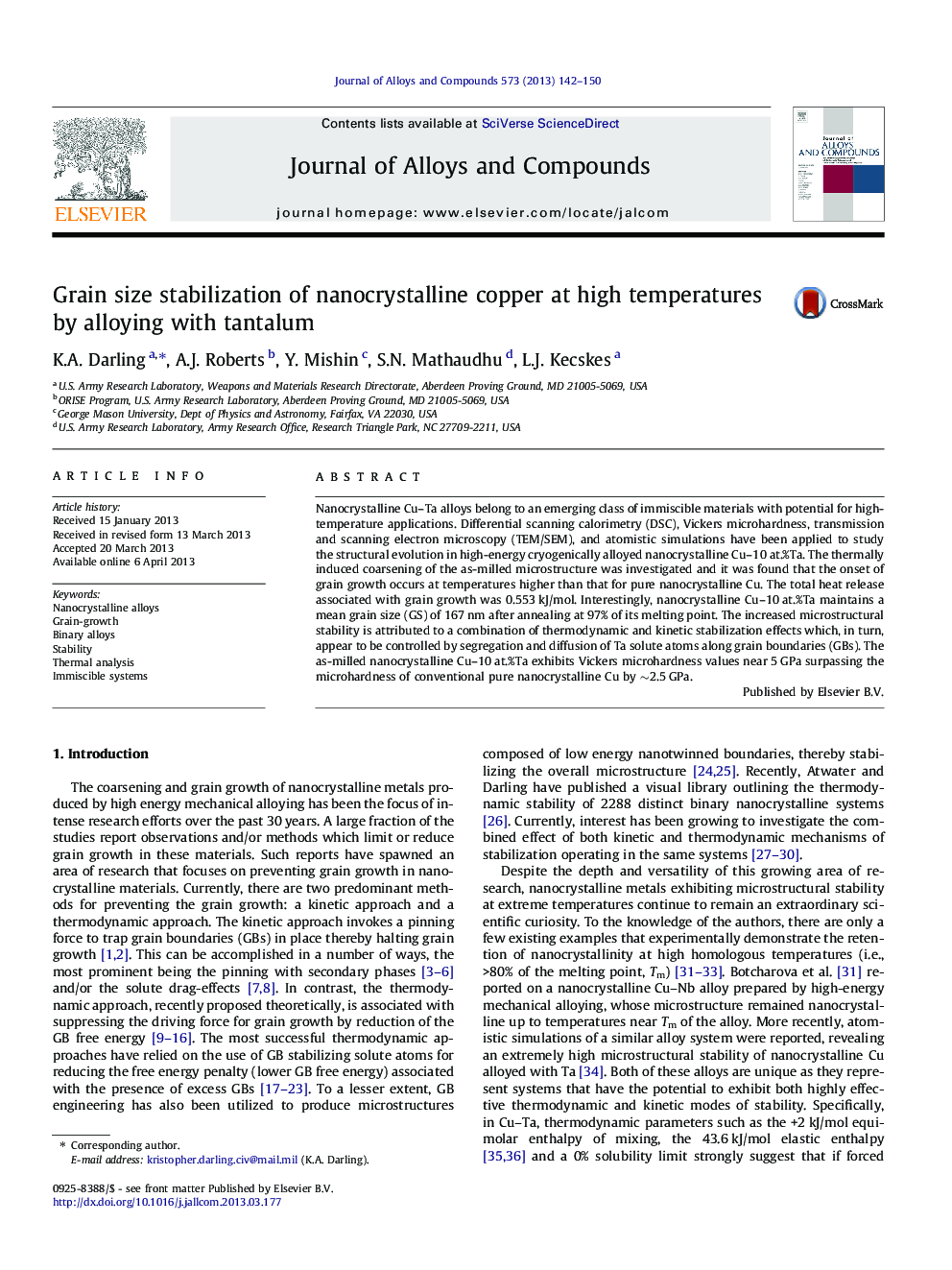| Article ID | Journal | Published Year | Pages | File Type |
|---|---|---|---|---|
| 1613915 | Journal of Alloys and Compounds | 2013 | 9 Pages |
•A mean grain size of 167 nm is retained after annealing at 97% of the melting point.•Hardness surpasses conventional pure nanocrystalline Cu by 2.5 GPa.•Extreme stability is attributed to both thermodynamic and kinetic stabilization.
Nanocrystalline Cu–Ta alloys belong to an emerging class of immiscible materials with potential for high-temperature applications. Differential scanning calorimetry (DSC), Vickers microhardness, transmission and scanning electron microscopy (TEM/SEM), and atomistic simulations have been applied to study the structural evolution in high-energy cryogenically alloyed nanocrystalline Cu–10 at.%Ta. The thermally induced coarsening of the as-milled microstructure was investigated and it was found that the onset of grain growth occurs at temperatures higher than that for pure nanocrystalline Cu. The total heat release associated with grain growth was 0.553 kJ/mol. Interestingly, nanocrystalline Cu–10 at.%Ta maintains a mean grain size (GS) of 167 nm after annealing at 97% of its melting point. The increased microstructural stability is attributed to a combination of thermodynamic and kinetic stabilization effects which, in turn, appear to be controlled by segregation and diffusion of Ta solute atoms along grain boundaries (GBs). The as-milled nanocrystalline Cu–10 at.%Ta exhibits Vickers microhardness values near 5 GPa surpassing the microhardness of conventional pure nanocrystalline Cu by ∼2.5 GPa.
